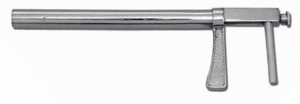I’m going to take a wild guess and assume that nobody reading this post (besides me) has participated in or witnessed a dairy judging contest, so now it’s time to explain what you’ve been missing out on!
Whether you’re judging dairy cattle or some other form of animal, the really unique part of a judging contest is that the animals are not the ones competing. Shows are competitions in which animals compete against each other and a judge determines which animals are the best. Judging contests are competitions in which people compete against each other by judging animals (kind of like how a judge would in a show); the best judges are those whose placings of the animals match up the closest to the placings of an “official judge” and those who can effectively defend their placings through oral reasons. So basically, people get judged on how well they can judge, cool, huh?
Before we get into an in-depth explanation of oral reasons, let’s first go over the logistics of the contest. Contestants will judge multiple “classes” of cattle. Each “class” consists of four animals numbered 1 through 4. These animals will be of the same breed and age so that they can accurately be compared against each other. Contestants are given 15 minutes to look at the animals in each class and place them from best to worst. For example, if I liked 1 better than 2, 2 better than 3, 3 better than 4, and thought 4 was the worst cow in the class, then my placing would be 1-2-3-4. Contestants typically have to judge 6 to 10 classes of cattle depending on the contest.
Sometimes contestants are asked to present oral reasons on a class, which basically means that they have to explain to a judge why they placed the class the way that they did (why they liked 1 better than 2, for example). This is where all those fancy terms used in the previous posts come into play. During the 15 minute judging period, contestants will write down notes for their reasons that they will use later for reference. After all of the classes have been placed, contestants will go to a different location to present their reasons. Contestants will be given at least 15 minutes to prepare for each set of reasons; during this time, contestants can use their notes to organize their thoughts and memorize what they want to say into a clear and concise 2-minute set of oral reasons, which is then presented to a judge (or judges) completely from memory (without notes). This can be an especially daunting task when you have to give multiple sets of reasons! Fortunately, you are guaranteed at least 15 minutes of prep time between each set. After you have given a set of reasons, the judges may ask you questions about the class to see how much you actually remembered about the cows, rather than just your notes.
Learning how to give a great set of oral reasons is an art-form that takes lots of time and practice to master (or come close to mastering). The important things to remember is that it is YOUR OPINION, so as long as you back it up with accurate facts and use COMPARATIVE terms (as opposed to descriptive terms), you’ll be well on your way to success!
I think that this pretty much wraps up my dairy judging unit! If you’re interested in learning more about dairy judging, consider taking AN SC 225 (Introduction to Dairy Judging) in the spring or AN SC 426 Section 2 (Advanced Judging) in the fall! As always, if you have any questions, feel free to ask!

























